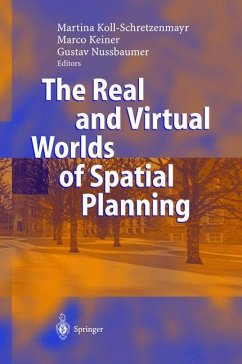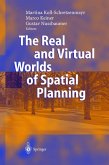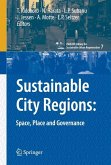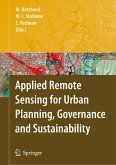The Real and Virtual Worlds of Spatial Planning brings together contributions from leaders in landscape, transportation, and urban planning today. The authors present an international range of case studies - from Europe, Australia, North America, Asia and Africa - that ground the exploration of ideas in the realities of sustainable urban and regional planning, landscape planning and present the prospects for using virtual worlds for modeling spatial environments and their application in planning. The first part of this volume explores the challenges for planning in the real world that are caused by the dynamics of socio-spatial systems as well as by the contradictions of their evolutionary trends related to their spatial layout. Case studies from developed as well as developing countries are presented. The second part presents diverse concepts to model, analyze, visualize, monitor and control socio-spatial systems by using virtual worlds. Theoretical topics include modeling spatial systems as Petri nets, cellular automata as well as dynamical systems.
Experiencing the world of daily life means to observe and perceive the natural, the man-made, the socio-spatial, and the politico-economic elements of the en vironment we live in. But, have you ever tried to explain the phenomena of daily life such as a traffic jam or mass transit to a child? It will take you quite a while to find suitable images to make invisible forces perceivable and con cepts like timetables, bus routes, or capacity constraints comprehensible. This exercise alone will convince you that we need imagery or virtual worlds to cope with the complexity of the real world. The task of spatial planning is to design, implement and manage alternative futures for a complex, dynamic socio-spatial environment that emerges from a wide range of intertwined social, political, economic and environmental processes. In order to learn about these processes and gain knowledge that en ables spatial planners to better understand and manage socio-spatial reality, they need to think in and work with virtual worlds.
Experiencing the world of daily life means to observe and perceive the natural, the man-made, the socio-spatial, and the politico-economic elements of the en vironment we live in. But, have you ever tried to explain the phenomena of daily life such as a traffic jam or mass transit to a child? It will take you quite a while to find suitable images to make invisible forces perceivable and con cepts like timetables, bus routes, or capacity constraints comprehensible. This exercise alone will convince you that we need imagery or virtual worlds to cope with the complexity of the real world. The task of spatial planning is to design, implement and manage alternative futures for a complex, dynamic socio-spatial environment that emerges from a wide range of intertwined social, political, economic and environmental processes. In order to learn about these processes and gain knowledge that en ables spatial planners to better understand and manage socio-spatial reality, they need to think in and work with virtual worlds.
The Real and Virtual Worlds of Spatial Planning brings together contributions from leaders in landscape, transportation, and urban planning. They present case studies - from North America, Europe, Australia, Asia and Africa - that ground the exploration of ideas in the realities of sustainable urban and regional planning, landscape planning and present the prospects for using virtual worlds for modeling spatial environments and their application in planning. The first part explores the challenges for planning in the real world that are caused by the dynamics of socio-spatial systems as well as by the contradictions of their evolutionary trends related to their spatial layout. The second part presents diverse concepts to model, analyze, visualize, monitor and control socio-spatial systems by using virtual worlds.









